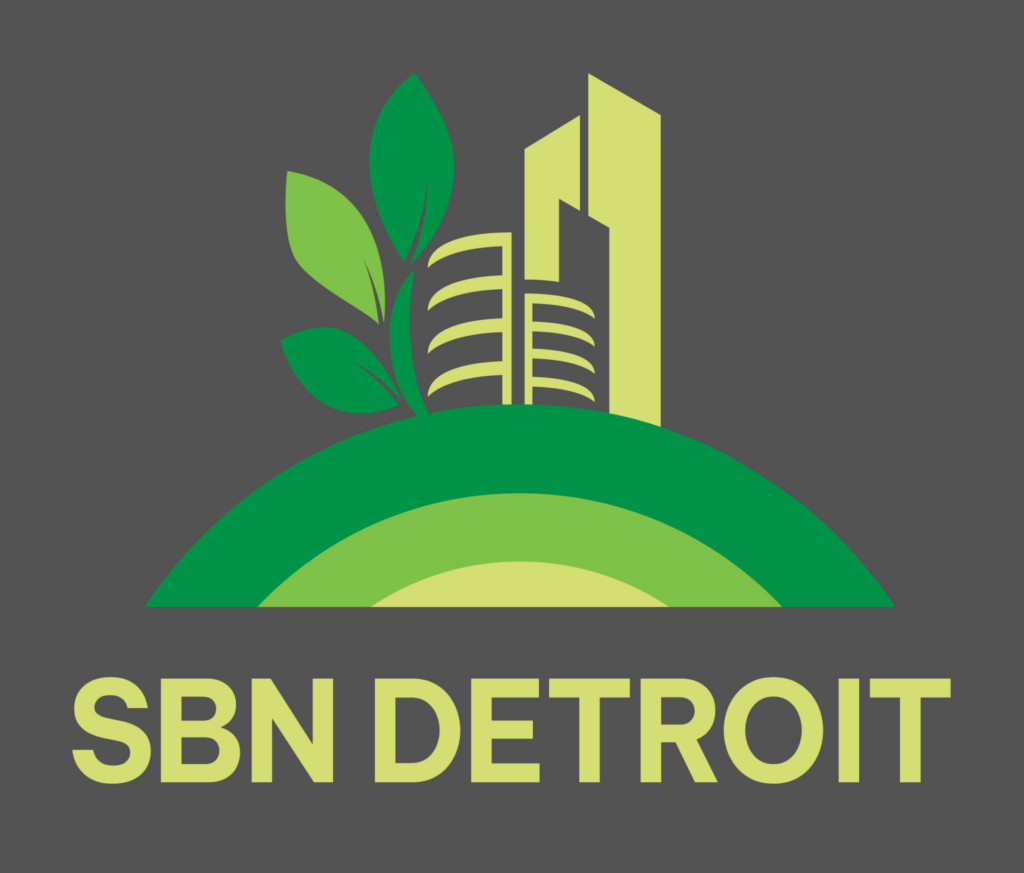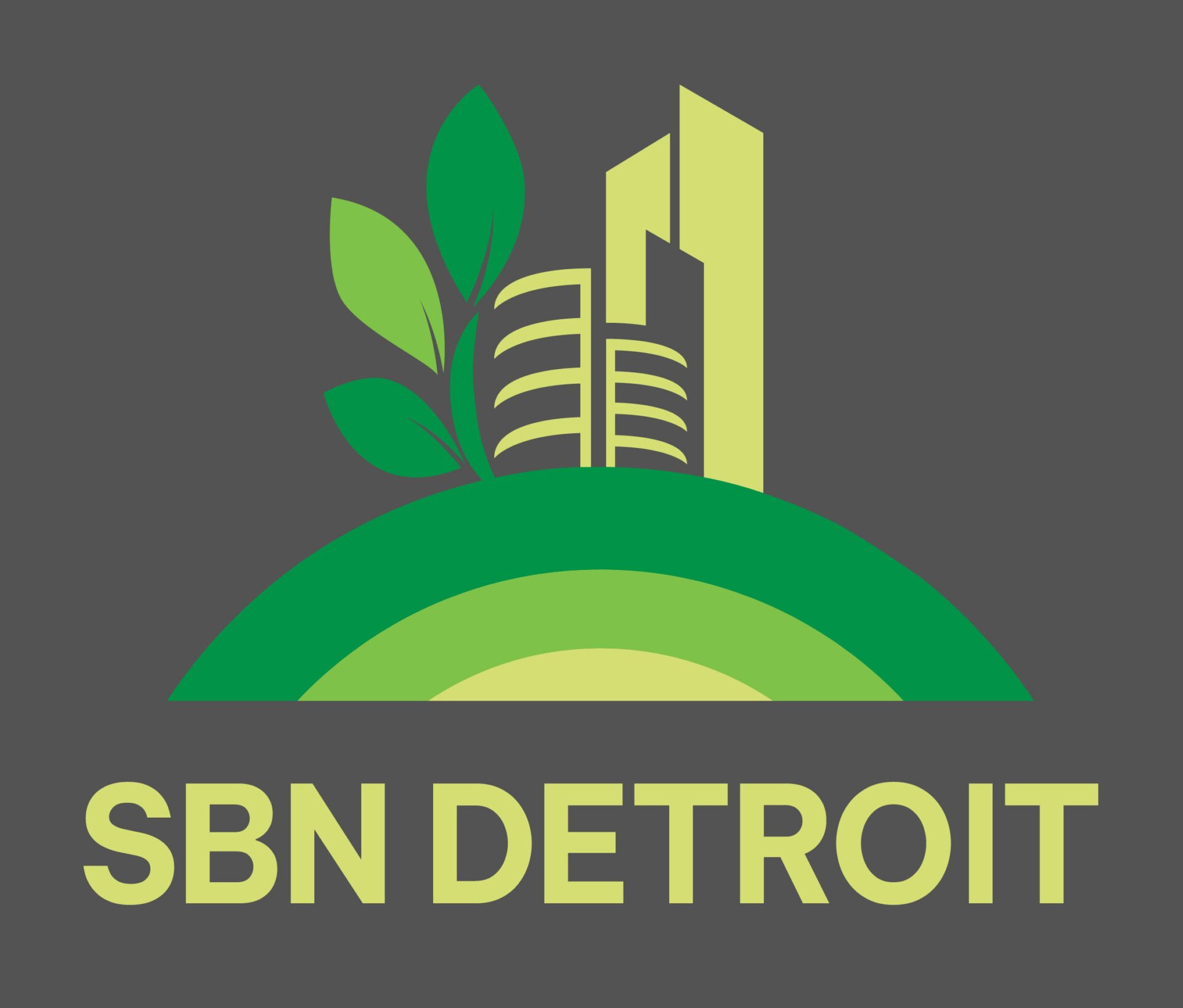Interconnected Set of Greenways and Blueways to Create New Southeast Michigan Trail

There’s the Appalachian Trail in the East, the Pacific Rim Trail in the West, and the Continental Divide Trail in the Rocky Mountains. Now, Southeast Michigan will have its own regional trail called The Great Lakes Way. Over the past several years, the Community Foundation for Southeast Michigan (CFSEM) has convened a group of organizations, municipalities, and agencies to explore ways to build on the freshwater assets of the Southeast Michigan region. They created the vision for The Great Lakes Way. Once complete, The Great Lakes Way will be an interconnected set of greenways and blueways (water trails) stretching from southern Lake Huron to western Lake Erie, passing through the counties of Monroe, Wayne, Macomb, and St. Clair. The Way incorporates about 160 miles of greenways and 156 miles of blueways along Southeast Michigan’s coastline. SBN Detroit spoke with Greg Yankee, CFSEM director of arts and environment initiatives about the vision, the sustainability aspects, and how Southeast Michigan businesses can get involved. Q: How did The Great Lakes Way get initiated under the Community Foundation for Southeast Michigan? A: We’ve been seeing a great greenway movement happening throughout the region. Communities are making serious investments in fantastic projects but there are gaps between them. It led us to think about how to connect these trails and in general, how to give more people access to trails and greenways and waterways all across the region. So, our mission is to connect people to the outdoors, to each other, and to water in a bigger way. This requires funding and community engagement and the actual work to make it happen, and all of that needs to occur in a certain order. The Community Foundation of Southeast Michigan works across all of these communities and can facilitate the outreach, coordination, and funding so it makes sense for The Great Lakes Way to have this initiative with us. We have a 35-member advisory committee at the heart of The Great Lakes Way project, providing us with information, guidance, and connections to critical resources. Committee members include representatives from the Michigan Department of Natural Resources, the Metroparks, Michigan Trails and Greenways Alliance, the National Park Service, as well as parks and recreation leaders from the communities all along the route. Q: What solutions are you looking to provide with The Great Lakes Way? A: We feel that there is a definite need to provide more opportunities to spend more time outdoors recreating and enjoying our waterways. For me, growing up in Trenton we had Elizabeth Park on the water, but trails were limited and not connected to neighboring communities. There is a huge opportunity to strengthen community connections and make it easy for more people to experience these incredible natural resources all along our waterways. In short, there is no equitable access to water. In a lot of cases, geographical location determines whether you spend time recreating outdoors. But we are working to level the playing field and put these amenities within reach of as many Southeast Michigan communities as possible. Q: What are the goals of The Great Lakes Way from a sustainability perspective? A: Our goal is to help communities develop their public greenspaces while looking through a sustainability lens. Improving public access to water, building trails, and creating green spaces will also help grow our outdoor recreational economy – a win for the environment and the economy. When residents and businesses witness these projects making the environment healthier, getting people outside, connecting people to places, and enhancing economic opportunities, sustainability becomes more a part of our lives. We want to foster a stronger relationship between people and the watersheds they call home. Q: How does the Community Foundation for Southeast Michigan oversee the implementation of these sustainability practices? A: The projects are planned and managed by the individual municipalities, of course, not us. But our team acts as a resource to help communities in the planning stages by connecting them to resources, experts, and service providers so that sustainability is not an afterthought. We seek to help, not interfere. We are mindful of and in communication with each of the municipalities and communities developing these projects. So, if, for example, Clinton Township is putting in a kayak launch and Trenton wants to do the same, we can connect the two communities to learn from each other and share resources. We do a lot of that. We value being an ally and our goal is helping and facilitating, not managing a community’s projects. Q: We hear a lot about greenways but not blueways. What is the vision for blueways? A: Again, although I grew up in Trenton, I did not consider myself to be living on the water. That’s because the area along the water was an industrial corridor and often impossible to access for recreation. We have these remarkable rivers and lakes, but traditionally it’s only been where factories go. We want to help revitalize former industrial spaces where appropriate and open them up for public recreation and enjoyment of the water. Combining greenways and blueways will be a huge victory for everyone. The defining geographic characteristic of Southeast Michigan is our waterways, and to make a shift toward people enjoying them for recreation, nature appreciation, and gathering places is exciting. This is what creating better access to blueways will provide. Q: How can The Great Lakes Way impact the economy in Southeast Michigan? A: We commissioned a study on the economic impact of The Great Lakes Way. The study shows, all told and over time, that the total economic impact of The Great Lakes Way is in the billions of dollars. Q: How will The Great Lakes Way impact businesses in Southeast Michigan? A: The outdoor recreation businesses will be positively impacted, no doubt. Businesses and other points of interest located along the Way will benefit from people who stop for lunch, coffee, shopping, or to check out a historical landmark. We strongly believe that employers now recognize the
Recycling Rates in Michigan Are At an All-Time High

According to a recent press conference from the Michigan Department of Environment, Great Lakes, and Energy (EGLE), recycling in the Great Lakes Region is now at an all-time high. The total amount of residential recycled materials being reported for fiscal year (FY) 2022 was 620,494 tons – that’s over 66,000 tons more than the previous new record set the year prior. Materials Michiganders recycled last year would fill the football stadiums at Ford Field, Michigan State University’s Spartan Stadium, and the Big House at the University of Michigan. Michiganders recycled over 339,000 tons of paper and paper products during FY 2022, more than 154,000 tons of metals, more than 71,000 tons of glass, and over 45,000 tons of plastics and plastic products. SBN Detroit spoke to the executive director of the Michigan Recycling Coalition, Kerrin O’Brien, and executive director of Green Living Science, Natalie Jakub to get their unique perspectives on how the state got here and how businesses in Southeast Michigan are participating. Q: Recycling rates in Michigan are now at an all-time high. How did we get here? O’Brien: There is a history of recycling in Michigan communities. Those communities that made recycling a priority began to develop their own programs. With advocacy through the Michigan Recycling Coalition, we started to see state-level leadership around 2014. Then Governor Rick Snyder saw the value of recycling and productive materials management and funded four additional recycling technical assistance staffers. The state department also began working with stakeholders to identify the level of funding needed to support a robust recycling program in the state. Funding for recycling was passed in 2018 which supports community grants for infrastructure and market development which are needed to grow recycling in Michigan. Q: How do you think education has impacted the increase in recycling? Jakub: Green Living Science works a lot with youth and in schools and one of the things we continue to hear is that families will often begin recycling because their children have learned about it and want to institute it in their homes. So, more education at a young age is a natural part of this behavior. The more conversations we have about the impact that waste has on our lives, people start to understand. The simpler we can make the education and the actual act of recycling we will see more people willing to participate. The city of Detroit has a 40% recycling participation is a huge jump from 11% a decade ago, so people and businesses are learning and largely eager to support. Q: How does Green Living Science work with businesses in Southeast Michigan regarding recycling practices? Jakub: GLS began in 2011 with a focus on education in the schools but over the years we started to see a great need for local businesses to get support setting up programs. Many businesses don’t have a dedicated staff person so it’s typically an administrator now tasked with everything that is involved with recycling – which can be a lot. We developed a program called Bee Green Business to make it easy for businesses that includes setting up infrastructure, bins, signage, and education. Bee Green Business is an education and certification program that aids businesses and their employees in becoming responsible corporate citizens. This program has been successful from small independent brands like 14 East Café and Red Crown restaurant to large institutions like Henry Ford Health, Ally Financial the DIA, and more. A challenge we commonly see in commercial facilities is that they weren’t designed for more than one waste stream, so there are challenges with space issues and infrastructure needed to make the programs run smoothly and efficiently. Many haulers only offer dumpsters for recycling and we’ve learned that there’s a great need for cart programs. Something mobile that can be moved from an office to a loading dock and dumped. Q: How can we and are we bringing more businesses into our recycling efforts? O’Brien: Our perspective is that recycling services need to be on par with waste services. If we are serious about developing a circular economy and getting the most value out of the materials already circulating in our society then we have to divert waste to recycling. We are working to assure businesses have the services they need to do this. Businesses also have to make the budget and program choices to say yes recycling is worth it. Reducing waste can add to the bottom line and savings can be used to expand services to make recycling even more efficient. Real progress will be driven by a combination of factors including public opinion, consumer choice, manufacturer ESG goals, future resource needs, and policy. Together we think these elements are moving businesses to make smart choices with end-of-life materials. Q: What can businesses get even better at recycling? O’Brien: Right now, brands are driving recycling in a new way. Many national, and international brands are looking at where the resources for making future products will come from and many of them are recognizing that recycling provides them with needed feedstock for new products This long-term thinking about product development and impacts provides good reason to recycle for all of us. In addition, many more job and business opportunities will develop locally as we get better at sorting through waste to recover and process resources for manufacturing that would otherwise be thrown away. Q: What does all of this mean for job creation in Southeast Michigan? O’Brien: This is a big topic but basically what we are talking about in the development of a circular economy is creating a new sector based on extracting resources where no one saw resources before. Anything we can do in this new sector – collection, diversion, processing, secondary processing to turn plastic to pellets, for example, means a new business opportunity in this region, the state, and the country. Diverting the resources that are in our waste offers a huge opportunity for new jobs. Q: Governor Whitmer and the
SEMCOG Working to Develop Plan to Reduce Greenhouse Gas Emissions
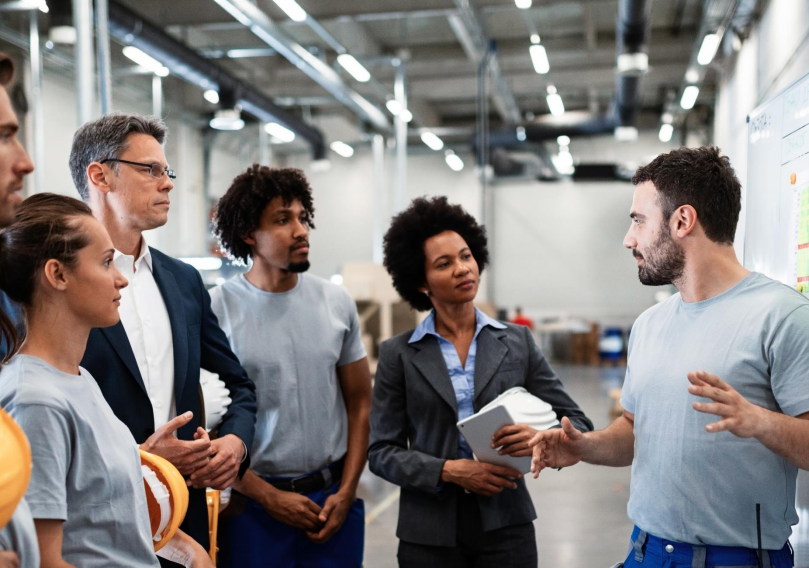
The Detroit-Warren-Dearborn Metropolitan Statistical Area (MSA) recently was allocated $1 million to develop a plan for reducing greenhouse gas emissions and other harmful air pollution through the US-EPA’s Climate Pollution Reduction Grants (CPRG) program. The plan will cover the MSA’s six counties – Wayne, Oakland, Macomb, St. Clair, Livingston, and Lapeer – as well as Washtenaw and Monroe counties. The Southeast Michigan Council of Governments (SEMCOG), which is the lead agency for Southeast Michigan’s Climate Action Plan, will manage the funds. The plan is in place to help local governments improve and maintain Southeast Michigan’s transportation systems, environmental quality, economic interests, and infrastructure. SBN interviewed SEMCOG Planning Director Kevin Vettraino about what this will involve, how it will roll out, and how it impacts businesses, residents, and communities in Southeast Michigan. Q: Tell us about SEMCOG. A: SEMCOG is the regional planning organization for the seven counties that make up the Southeast Michigan region: Livingston, Macomb, Monroe, Oakland, St. Clair, Washtenaw, and Wayne counties. Our primary mission is to support our local government members, including counties, cities, villages, townships, and educational institutions. We work to improve the quality of the region’s water, make the transportation system safer and more efficient, revitalize communities, and spur economic development. These things shape the areas we get involved in. I like to say we focus on planning for the issues or opportunities that cross geographic or community boundaries, such as roads, rivers, lakes, air, and the economy. Q: The U.S. Environmental Protection Agency allocated $1 million to develop plans for reducing greenhouse gas emissions, and SEMCOG is acting as the lead agency to develop a climate action plan. What will this entail? A: At a high level, the plan will establish community-developed and evidence-based methods to reduce greenhouse gas emissions that will meet the requirements of the EPA and CPRG. One approach is to enhance natural areas that capture carbon. The plan will also integrate extensive stakeholder outreach and input, along with equity considerations, and consider the impact of policies, strategies, and actions from the regional level down to the household level. This work complements the recently adopted Southeast Michigan GREEN: Strategic Framework for Growing our Resilience, Equity, and Economy with Nature, which is an initiative to address some of the region’s most pressing challenges – managing floods, fostering climate resilience, improving community health, and protecting our natural assets – all while creating vibrant places where people want to live and where businesses will thrive. Q: What is the next step and timeframe for action? A: The next step will be launching a task force with the intent to meet at least eight times over two years. Part of the large overarching task force will be smaller focus groups that will cover more specific parts of the plan. The focus groups have not been formed yet, but they are likely to focus on transit, energy efficiencies, EVs and the impacts of the transition, materials management, and nature-based opportunities and impacts. Beyond the focus groups is community engagement. This is critical for success. It’s important for us to have a two-pronged approach here, that being education and data sharing and also public engagement and input. Q: What does community engagement entail? A: Surveys, local meetings, webinars, and other outreach with a lens toward ensuring that the benefits and policies that come out of this work support all residents, including lower-income residents. These people have traditionally been underrepresented and more impacted, and we need to ensure that any actions we take support them and don’t further negatively impact them. Q: How will this impact Southeast Michigan businesses and communities? A: My hope is that through our work there is an education component. In basic terms, we need to make sure we are speaking the same language. There are a lot of terms around climate action such as equity, green infrastructure, etc., and we need to ensure that whether you are a business, community, government entity, or a resident, we all have a similar understanding regarding what these terms mean and why they are important. I hope that business leaders can see themselves within the strategies, policies, and actions that come out of this work and align with them. We all have a role to play in this. This plan will not be the silver bullet that can solve the climate challenges in the region but all of us together can make an impact. From installing a green roof or rain garden to ensuring all people have safe facilities to walk or bike to destinations, whether it’s a sidewalk or bike path or considering nature-based and green infrastructure solutions when putting in a new parking lot or reconstructing a roadway, there are things we all need to be thinking about and doing. Q: What are your main challenges? A: Again, it’s getting a common set of words and a familiar language. It’s also about education and making everyone understand the importance of the plan, and working toward a healthier region, and putting sustainability practices in place to support our climate long into the future. A lot of our work targets dates far into the future, such as 2050, and sometimes it’s difficult to get buy-in when it’s so long-term. The challenge is we need buy-in and immediate action to get to where we want on the horizon. Q: What are the main opportunities? A: First, we have the $1 million funding to help develop a plan, inventory our greenhouse gas emissions, and develop policies – which is great. Through the development of this plan, the region and our communities and businesses will become competitive for an estimated $4.6 billion in EPA grant funding for implementation. Second, if we are able to get folks both in leadership and residents across the region to both understand the importance of the action plan and to be intentional about environmental justice and the allocation of funds and the action to support those directly impacted, that is a great success. Q:
Detroit/Wayne County Port Authority Seeks Decarbonization
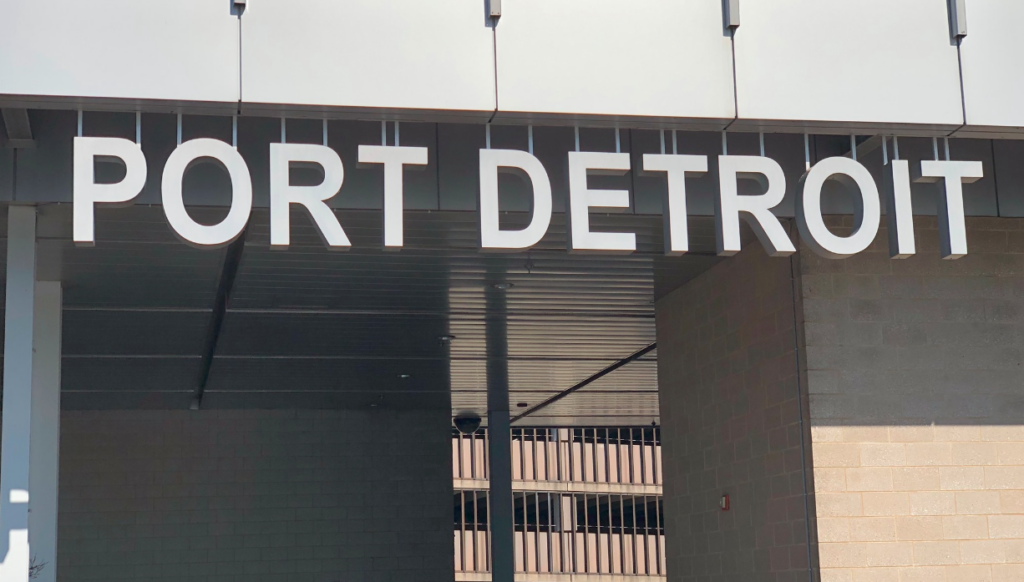
Michigan’s largest inland port, the Port of Detroit is located on the Detroit River in Wayne County as well as the navigable portions of the Rouge River. The Detroit/Wayne County Port Authority oversees the port, which is made up of multiple marine terminals for handling general, liquid, and bulk cargo as well as passengers. Each year, the Port Authority oversees more than eight million tons of cargo at 29 private and public sector terminal facilities in the Port of Detroit, including international and domestic commodities, which are shipped in and out of the port. The port is the third-largest steel-handling port in the nation. At the Port Authority’s own terminal, steel, aluminum, and project cargoes are handled for the support of the manufacturing community in Southeast Michigan. Now, the port is undergoing a decarbonization project which aims to reduce its environmental impact and improve air quality. The decarbonization project will be undertaken in partnership with Tunley Engineering and Southwest Detroit Environmental Vision (SDEV) and will involve a range of initiatives, including the implementation of renewable energy sources, the electrification of port equipment, and the use of cleaner fuels while ensuring residents and businesses in the area are involved and have input. Said Raquel Garcia, executive director of SDEV, “We are on board to – among other things – make sure the community understands what’s happening in their own backyard and that they have access to people leading the project.” SBN Detroit spoke with the executive director of the port, Mark Schrupp, about the project and its impact on tourism, area businesses, and more. Q: The Port of Detroit is going green with the goal of net zero by 2040. Can you provide some background on how you arrived here and how you are taking this on? A: Discussions originated in early 2022 with the Great Lakes St. Lawrence Governors & Premiers, looking at ways to help decarbonize the maritime industry. Our two overarching goals are to improve air quality and reduce greenhouse gas emissions. A lot of the ports on the West Coast and Europe have been doing good work for several years. The Midwest is a little behind but starting to accelerate. We reached out to state Sen. Stephanie Chang, and she has been a great supporter. She assisted in helping us to secure $1 million in state funding to undertake a study on where we are today and develop a plan to decarbonize. The big challenge is that the Port Authority does not have the authority to compel the private terminals, which are responsible for 95% of the cargo, to participate. We have been identifying incentives and working to persuade these terminals to develop a single plan, measure the greenhouse gas emissions, and develop strategies together. To start, we needed outside expertise. We put together a scope of work in December and put out an RFP and ended up partnering with Tunley Engineering, which has been eager to jump in and help. We have also been working heavily with Southwest Detroit Environmental Vision (SDEV) who – among other things – is helping us to connect to the community to ensure we understand what their interests are. You can’t take on just a decarbonization plan… in the port region where people work and live it’s also about air quality, vibrations, sound and particulate matter, and more. So, we are looking at these things and working to address them through best practices. Since April, we’ve been engaging with terminals to get a baseline report of greenhouse gas emissions for each terminal. Once finished, we will publish an interactive map for people to see the current carbon footprint. We are specifically looking at the carbon footprint of moving cargo in and off the water – not the industrial practices of the businesses. We are also looking at the cruise ships that we service at our downtown dock, and the impacts and the footprint of governmental entities that participate in the port, such as the Detroit Police Harbor Master, U.S. Army Corps of Engineers, and more. This is a good time to be taking all of this on. There is a lot of federal and state funding and tax incentives that help bring down the initial cost of switching fuel sources. We’ll be applying for grants to help the terminals move forward. Q: What other entities are you working with to take on this project? A: We are engaging with many organizations and local sustainability offices to help and support our efforts. We have been working with The Department of Environment, Great Lakes, and Energy (EGLE) to get data and take advantage of any grant opportunities to tackle air quality and particulate emissions. We have met with the EPA Region 5 office in Chicago to stay close in terms of funding opportunities and ways they can support our efforts. The International Maritime Organization has a 2050 plan in place and is setting standards around the fuel in the ships that move in international waterways. They are looking at cleaner fuel alternatives as well. The Port has a fueling station run by Waterfront Petroleum, and they are working toward a biodiesel fuel that can be used without having to change engines. Maritime infrastructure is very expensive and lasts a long time, so making changes needs to be planned carefully. Changing fuel to a lower carbon footprint, like biodiesel is a good first step because it doesn’t require any changes to ship engines. Zero-carbon fuels like hydrogen and ammonia will take more planning and investment. We can’t do it all at once but should do what we can as we work in the right direction. Q: Do you think this a unique undertaking for a port authority? A: Ports on the coasts have been working on this for some time. California has led the way and those ports are ahead of us. The Port of Cleveland has done work to reduce its carbon footprint. So, they are a little ahead of us, but
Vehya – Working to Help Consumers and Businesses Electrify Faster
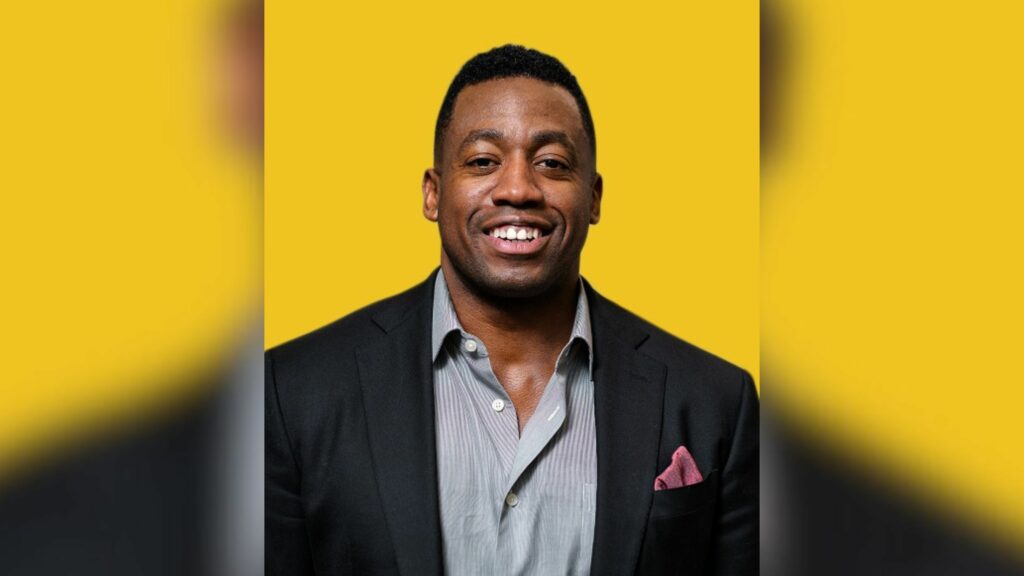
Detroit-based Vehya is a two-year-old marketplace, which offers services to businesses and individuals looking to adopt EV technology. SBN Detroit interviewed founder and CEO William McCoy to find out more. Q: What can you tell us about Vehya? A: Vehya (pronounced and meaning “via”) is a marketplace for electrification. With everyone moving (or trying to move to) electrification quickly for a sustainable future, we know the project management – research, execution, installation, maintenance – portion can be challenging. So, we created a platform that makes that process easy. Before, if a consumer or office wanted to get an easy charger, they would have to find an electrician, vet them, research products to find the best solution, schedule installation, etc. Vehya turns those steps into a turnkey process. We sell electric vehicle chargers, solar, battery storage, and other resiliency products and have a network of certified service providers to install and service them. Q: Are the end users consumers or businesses? A: Both. In the beginning, we focused more on the commercial and quickly realized there was just as much of a need on the consumer side. The people we were working with on commercial projects were asking if we could do this for them at their homes, or for their clients so we created a consumer-facing platform as well. Q: What needs do you believe Vehya solves? A: People and businesses that are looking to transition to electric often do not have the time or resources for the research and logistics involved. So, we fill that gap. Early adopters will jump in and figure it out, but for others – for the mainstream – they need help. We streamline the process to help both consumers and businesses electrify faster. Q: Tell me about your new partnership with DTE. A: DTE was looking to help their customers streamline the process of obtaining electric vehicle chargers both from a financial and logistical standpoint. They launched an RFP and ultimately chose Vehya for this partnership, which we are so happy to participate in. It’s a fantastic program because it opens the door for many more people to make the transition to EV who couldn’t without the financing DTE’s program offers. Further, many homes need service panel upgrades to support EV charging and that is an additional cost, so the financing becomes even more important. Customers can now come onto the platform, buy a charger and have it shipped to their home, identify an electrician to install it, and sign up for financing all in one place. Through this program, we’ve had about 2,500 enter the platform chargers and have facilitated close to 400 installs in the three months since it launched. Q: Tell me about the partnership with Stellantis A: In March, we became a preferred partner for EV charger sales, installation, and maintenance for Stellantis’ U.S. auto dealers. Our program includes Vehya-certified electricians, detailed site surveys, comprehensive estimates, and a dedicated account manager that handles all administrative and project management duties. Q: How is the Vehya marketplace different than other platforms? A: The fact that we offer products, service providers, and project management is different than other platforms. You can buy a charger on a marketplace like Amazon but then you have to figure out the installation. We vet and certify our service providers as well. Q: Tell me about that vetting and certification process. A: Most of our electricians are certified by the Electric Vehicle Infrastructure Training Program (EVITP). We then certify them regarding experience and licensing. They must have the highest levels of insurance. And we do a background check. Q: How do you think the work you do impacts Southeast Michigan businesses? A: A lot of businesses want to electrify their fleets and company cars but don’t know where to start and don’t have the resources to do the research. Workforce development and job creation are also important pieces to us. Vehya is the marketplace that connects consumers and businesses with highly qualified service providers. It connects these service providers to people raising their hands for help in turn creating and bolstering careers. Q: What does the future look like for the company? A: We are working to make our online processes even quicker and to scale our offering. We are also working with underserviced communities to take advantage of EV transition opportunities as well. Financing is key. An average install in the Detroit area is $2,300, because as I had mentioned, a service panel upgrade is typically needed. We are working with banks now to put together consumer packaging to spur adoption and make it easier for more people. Equity and inclusion have to be considered – we need everyone to be a part of this. Be sure to subscribe to our newsletter for regular updates on sustainable business practices in and around Detroit.
Working to Sequester Carbon Within Urban Wood
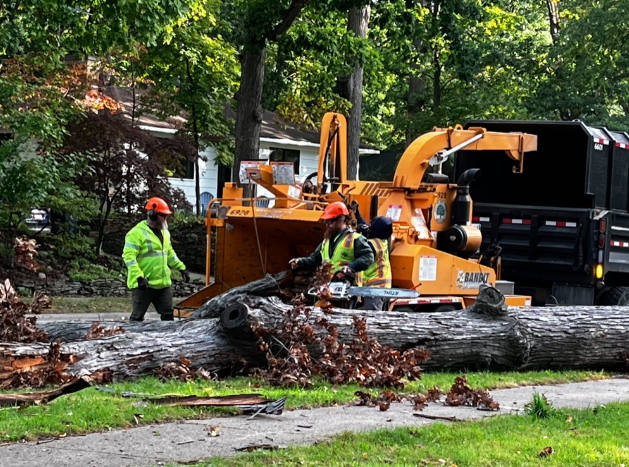
According to Tiffany Giacobazzi, Ann Arbor urban forestry & natural resources planning coordinator the Ann Arbor Forestry Department, the city of Ann Arbor loses about 600 trees per year. This reduces its carbon storage capacity dramatically. Much of the loss sits within furniture-grade urban lumber, meaning the trees can be repurposed for furniture or other long-lived urban wood goods that aid in sequestering carbon, versus being used for mulch or firewood or being diverted to landfills. Ann Arbor has partnered with Urban Ashes to implement its Circular UrbanWood Triconomy™ (CUT Model™). This model is meant to ensure that logs are put to their highest and best use to sequester as much carbon as possible. SBN Detroit spoke with Paul Hickman, Urban Ashes founder, CEO, and principal designer, and Tiffany Giacobazzi, Ann Arbor urban forestry & natural resources planning coordinator, to find out more. Q: What is Urban Ashes, and how did this program with Ann Arbor come to be? Hickman: I will provide a little background here for context because Urban Ashes has gone through a bit of an evolution. Initially, it started with a major career change for me by taking a job in California with one of the first sustainable lumber companies in the world. I eventually moved back to Michigan and started the original Urban Wood Project with three others in the early 2000s in response to the infestation of the emerald ash borer to help utilize trees beyond mulch, which was the most common response for the disposal of ash trees then and now. That was the impetus, but it immediately expanded to include all fallen urban trees and into Urban Ashes. Urban Ashes grew to sell to over 250 retail partners across 43 states over ten years, repurposing hundreds of tons of lumber into picture frames, furniture, and other items. From the beginning, our focus was also to work with formerly incarcerated individuals as a labor force, and that remains a strong component of the Urban Ashes business model today. Over time, the lack of wraparound (support) services (for workers) took a heavy toll, and eventually, we shifted entirely, shut down our manufacturing, and decided we needed to focus on building the infrastructure to develop the supply chain more thoroughly and consistently and grow the markets for utilization as well as develop the critically needed wraparound services needed for our target labor pool. So, we partnered with NextCycle Michigan and went through their FLOWS track which led to an EGLE grant. Then came the vision for the Circular UrbanWood Triconomy™. We were fortunate enough to work with the University of Michigan graduate students for 18 months to validate the viability of the model, and beginning in 2021, we have piloted it with the city of Ann Arbor. Q: How and why did the city of Ann Arbor come to change the way it processes trees and work with Urban Ashes? Giacobazzi: As the city has shifted with its sustainability goals and A2Zero plan, we started to look at how we could divert more out of the waste stream. We wanted to achieve the highest best use for materials that come out of the urban forest. So, we connected with Urban Ashes and partnered on this project. I have support all up and down the line from city administration which is really important. We are fundamentally changing the way we are dealing with urban wood and our urban forest so we must all be in support of this new process. Q: What does this program involve? Hickman: For years, all fallen urban trees in Ann Arbor (as is the case with most cities) were used for mulch or firewood. Accordingly, Ann Arbor loses approximately 1,111 metric tons of carbon every year and we were able to show them that by implementing the CUT Model™, we can capture upwards of 700 metric tons of that 1,111 and keep it in use and sequestered. The process involves cutting the trees down in a way that holds the most carbon and is best suited for the mills. The process also involves setting up the mills, facilities, contracts, and tracking methods, and then implementing everything. So, that is the work that Urban Ashes has been doing. Q: What do you, as the Urban Forestry and Natural Resources Planner, hope to achieve through Circular UrbanWood Triconomy™? Giacobazzi: I want to make sure the trees and lumber that have to come out in Ann Arbor go to the best use possible. I want it diverted from the waste stream and we are looking to lock up the carbon for as long as possible. We put such time and effort and thought into the development, care, and maintenance of our urban forest, it seems that the next natural best step is to complete the lifecycle of these trees and extend the usefulness of the trees once they die or have to come out. Q: In what ways has the lumber from Ann Arbor been repurposed? Hickman: Typically, the lumber goes to mills to be cut into slabs or dimensional lumber, kiln-dried, and processed, and then is sold as raw lumber to manufacturing or local woodworkers. The wood is then used for items such as furniture, frames, ceiling/wall cladding, flooring, household trim packages, decorative pieces, and more. Q: What other cities are you working with? Hickman: We are farthest along with Ann Arbor. But we are also working with Grand Rapids and are in talks with Detroit, Lansing, Traverse City, and several others outside of Michigan. In terms of businesses, we are working with a startup through Centrepolis called Lily Pad Labs out of Holland, Mich., to provide urban black locust for decking and tables for their autonomous electric boats. We are also working in conjunction with Centrepolis to help bring Daika Wood’s game-changing urban wood waste processes and products to Michigan. These are a few of the things we have happening at the moment. Q; In what ways do you think Urban
Banking With a Sustainability Mission
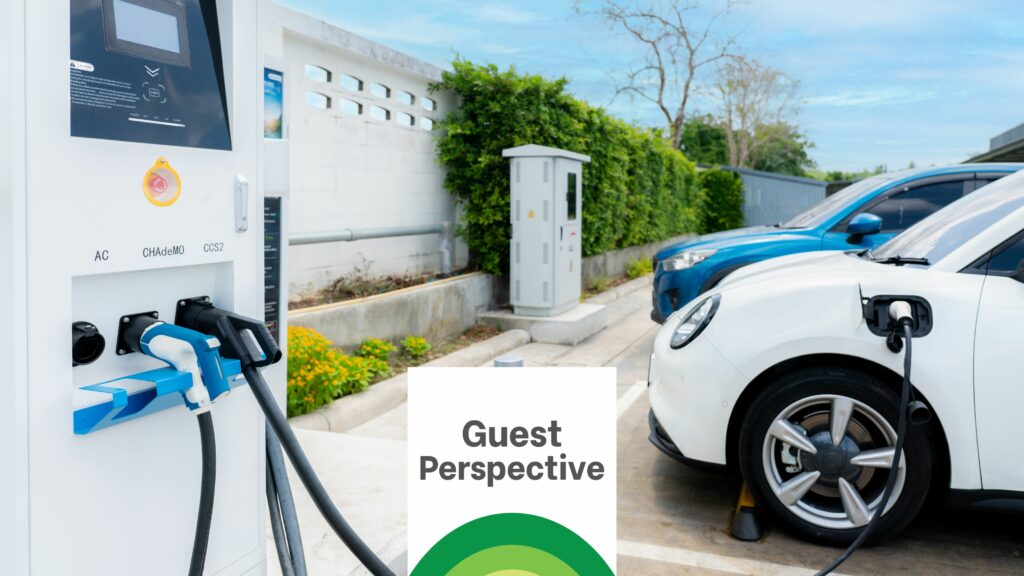
BETH CORREA, DIRECTOR OF CORPORATE RESPONSIBILITY, FLAGSTAR BANK, AND A LEADERSHIP COMMITTEE MEMBER FOR SUSTAINABLE BUSINESS NETWORK DETROIT Flagstar Bank understands that environmental concerns have far-reaching implications for society and businesses alike. By prioritizing sustainability, we demonstrate our commitment to mitigating our environmental impact. In 2022, we hired an ESG/Sustainability Director, Kirby Brendsel, in order to streamline and enhance our sustainability strategy as well as to build out our broader ESG efforts. This dedicated role ensures that environmental considerations are integrated into the bank’s strategies, policies, and operations. Kirby brings many years of experience in the ESG/Sustainability space. As part of his role, he oversees the implementation of sustainable practices such as reducing energy consumption, minimizing waste generation, and promoting eco-friendly initiatives. ADOPTING SUSTAINABILITY PRACTICES Adopting sustainable practices—and developing sustainable products and services that meet customers’ needs—can significantly enhance Flagstar’s corporate reputation. In an era where customers increasingly favor socially responsible companies, sustainability initiatives can differentiate Flagstar from its competitors. By demonstrating our commitment to sustainability, the bank can attract environmentally conscious customers, employees, and shareholders who value ethical and responsible business practices. This positive focus on sustainability can lead to increased customer loyalty, brand recognition, and, ultimately, financial success. Sustainability initiatives at Flagstar also serve as a proactive approach to risk mitigation and long-term financial stability. By identifying and addressing potential environmental risks, such as climate change impacts or regulatory changes, we can safeguard our operations and investments. Moreover, sustainable practices often lead to cost savings through increased energy efficiency, reduced resource consumption, and streamlined processes. By minimizing operational costs and creating a more resilient business model, we can ensure our long-term financial stability. EMPLOYEES ARE KEY STAKEHOLDERS Flagstar recognizes that employees are key stakeholders in sustainability initiatives. In late 2022, we launched an environmental/sustainability-focused Employee Resource Group named the Green Team that helps us tap into the passion and creativity of our workforce. It also serves as a platform for employees to collaborate, share ideas, and contribute to sustainable initiatives. This engagement fosters a sense of purpose and empowers employees to make a meaningful difference. Moreover, the Green Team can act as a catalyst for innovation, encouraging employees to identify new opportunities and implement sustainable solutions throughout the organization. FINANCE INTEGRATING ESG FACTORS The world of finance is increasingly integrating ESG factors into investment decisions. By prioritizing sustainability, Flagstar aligns itself with emerging ESG standards and meets investor expectations. Staying ahead of regulatory changes and industry trends positions us as an attractive investment option for socially responsible investors. This commitment to sustainability enhances transparency, and accountability, and ultimately contributes to long-term shareholder value. In today’s rapidly changing world, the importance of sustainability cannot be overstated. Organizations across various sectors are realizing the need to integrate sustainable practices into their operations. At Flagstar, we recognize the significance of sustainability and are committed to incorporating environmentally responsible practices into the fabric of our organization. Flagstar’s sustainability initiatives not only benefit the environment but also contribute to our long-term financial stability and success. Be sure to subscribe to our newsletter for regular updates on sustainable business practices in and around Detroit.
Three Strategies for Developing Current and Future Sustainability, ESG Leaders
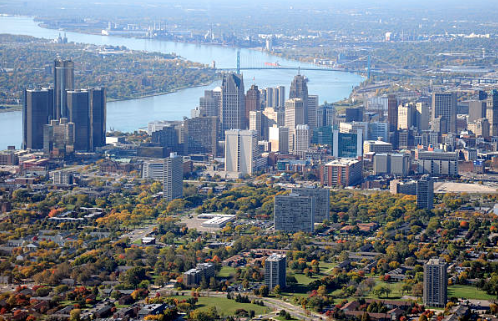
A common challenge for every business committed to sustainability is recruiting, retaining, and developing the right talent. Companies in Southeast Michigan and beyond are faced with the accelerating need to formalize their sustainability efforts, collect and analyze data, respond to government policies, answer to stakeholders, and more. And they need highly skilled people to lead all of these functions while tying them back to company strategy, operations, and business model. That’s the driving factor for WholeWorks, SustainabiliD, and The Erb Institute, which work to educate current and future business leaders in sustainability. Laura Asiala and the team at WholeWorks help business leaders, professionals, and functional experts accelerate their ability to connect the most important, or material, ESG issues in their organizations to achieve a return on investment and make a sustainable impact across the triple bottom line. SustainabiliD – owned and led by Kerry Duggan – is a strategic advising firm focused on innovating to net zero. SustainabiliD offers leadership sustainability counsel, strategy, implementation, and communication services. In short, Duggan and her team help coach and shape sustainability leadership within businesses. Erb Institute Managing Director Terry Nelidov and his colleagues are preparing the CSOs, CEOs, and sustainability leaders of the future. SBN Detroit posed questions about educating current and future business leaders in sustainability to these three industry leaders to learn their perspectives. Q: What will the impact of future chief sustainability officers have on businesses and society? Asiala: I see the CSO’s responsibility as critical for a sustainable business—at least for the foreseeable future. Three key roles are distinct for this leader. The first is the ability to reframe business opportunities and risks in environmental, social, and economic terms, as opposed to merely economic. The second is the ability to connect the dots between ESG opportunities and risks to contribute to a return on invested capital—and that can either be focused on increasing that rate of return or strategically protecting it. Both are valuable. Without a return on invested capital that meets the expectations of investors, there is no sustainable business. Finally, there is the ability to move seamlessly inside the organization, creating and encouraging a community of like-minded professionals that are seeded throughout the critical functions of the organization. These same attributes are also important in interacting with key stakeholders outside of the organization. This is much more about translation and influence than command and control. Duggan: Maybe it’s time to get away from buzzwords that keep us in one “boutique” corner. Future leaders will need to be able to integrate across their organizations, sectors, and throughout society. The impact needs to touch every corner of the global economy; therefore, we need to think of these leaders as chief integration and innovation officers! Nelidov: An enormous impact, two ways in particular. First, a CSO should be the chief advocate—along with the CEO— for business and sustainability within the company. The CSO needs to have a clear voice with the CEO since the CEO is ultimately responsible for integrating sustainability into all aspects of company strategy and operations. The CSO is there to help the CEO and to ensure that sustainability is not left out of the priorities. In terms of influence on society, the CSO plays a very significant role. The role of business in society keeps growing. Business is the most powerful force in the world. It’s the role of the CSO to harness that power for human rights, and positive social and environmental impact. Stakeholders – both internal and external – are asking companies to play an active role in social and environmental development, and that all points back to the CSO. Q: What kinds of traits do you think ultimately make someone a strong CSO? Asiala: It’s very important to have a trusted, respected leader and people on his/her team who can work across and within the company to identify the most important ESG issues and translate them both into competitive strategy and positive impact – socially, economically, and environmentally. That’s because integrating sustainability into an enterprise is not only the responsibility of a few select professionals, but the necessary work of a broad array of business functions: marketing and sales, business development, consulting, sourcing and supply chain, manufacturing, operations, and logistics, research and development, product development, IT, finance, and HR, among others. More than ever, a critical success factor is to equip managers and functional experts to integrate sustainability into the areas of the business for which they already have responsibility and authority. A CSO needs to lead that effort and create an environment for ongoing learning, experimentation, and innovation. That’s more than making resources available—although it is that—it’s about creating a community of support, encouragement, and accountability around these issues. Duggan: In many ways, you have to have the willingness to put your head down and do the work, not just talk about it. 21st-century leadership in sustainability means you need to understand the technical and financial feasibility of necessary work, but you also need a skillset in community engagement. I’m finding more and more movement in collaboration and creativity. Collaboration is a soft skill and a contact sport. It’s not easy but it’s absolutely necessary. The silos we spend our days in are not helping advance sustainability measures. We need more silo busters on the field! Nelidov: They are, essentially, the same traits that business leaders need but with a focus on science and social/environmental impact. That’s why we created this dual-degree program at the graduate level. CSOs need the skills to be able to understand the impact of science on business, and the impact of business on society. They need to understand climate change and the business implications that come with it. They need a grounding in stakeholders, communities, and social justice. CSOs also need strong people skills and relationship-building skills. They need to understand the changing expectations for business in society and the emerging role of business and nonprofit leaders. They need to get things done for sustainability by
A Focus on Housing and Commercial Corridor Stabilization
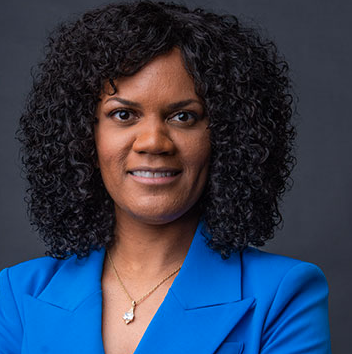
Detroit native and Councilwoman Latisha Johnson has been active in the community for 15 years and represents Detroit City Council District 4 on the east side of the city bordering Harper Woods and Grosse Pointe, a community she’s lived in most of her life. She attended Detroit Public Schools and graduated from the University of Michigan- Dearborn, where she earned a degree in finance. She began her career in Detroit’s tourism industry, marketing the city to visitors to attract spending within the local economy. Johnson began her public service in 2007 when she became vice president of the East English Village Neighborhood Association. During her tenure, she led efforts to eliminate blight, hold financial institutions accountable, and prevent residential property tax foreclosures. In 2014, she founded MECCA Development Corp. to address concerns of well-being, workforce development, youth engagement, and neighborhood revitalization. She has also has served as treasurer for the 5th Precinct Police/Community Relations Council, vice chair of the City of Detroit’s Board of Zoning Appeals; member of the Wayne Metro Community Action Agency Regional Advisory Council, and was a volunteer with Wayne State University’s AmeriCorps Urban Safety Program. SBN Detroit spoke to Johnson about her sustainability goals and about how residential development and business development go hand in hand. Q: What are your primary goals for sustainability in the city? A: One key thing is the evaluation of our internal processes. I co-chair the Small Business Task Force with two council colleagues, Mary Waters, and Angela Whitfield-Calloway. Our focus is to ensure that our requirements and practices for small businesses to bid on projects are not insurmountable. One example that came to light just recently: We had a contract come before us, and our procurement team had to make calls to companies to encourage them to bid. In a healthier environment, we should have contractors knocking on our door to bid on projects. This showed us that a lot of companies are overwhelmed by our processes. Small businesses just don’t have the resources to navigate them, so we are now trying to streamline the system and reduce paperwork and red tape. We want to find ways to help grow small businesses, particularly in the neighborhoods of Detroit. Q: In 2014, you founded MECCA Development Corp. to address concerns of well-being, workforce development, youth engagement, and neighborhood revitalization. How does this work impact and inform your role as a councilwoman? A: It definitely impacts what I do now. MECCA had four areas of focus: workforce development; residential development; seniors; and youth. The area I became passionate about – especially as we saw property values climbing – was and is residential development. Houses have become unattainable for lower-income families in this climate. Too many people cannot afford the down payments and can’t qualify for loans. Now I’m hyperfocused on affordable home ownership. This also comes from who I am as a Detroit native who grew up in a lower-income household. I have firsthand experience with these challenges. Therefore, I’m working on programs and opportunities to assist. We recently started a Down Payment Assistance Program to provide up to $25,000 for lower-income renters who want to purchase a house in the city. I’m also working on getting the city of Detroit to support Community Land Trusts. I recently worked with a group of students from the University of Michigan to understand how split-rate taxes (which tax vacant land at a higher rate than structures and improvements) would impact Detroit homeowners. I also established the Equitable Development Task Force, which focuses on addressing underserved communities through policies and programs that reduce disparities while fostering places that are healthy and vibrant. The task force may include residents, representatives from the community, labor, the business sector, as well as any other individuals interested in participating. So yes, MECCA helped shape and inform the work I do around housing and home ownership. I’m always striving to find ways to provide support to low-income families. Q: How do you think residential development impacts businesses in Detroit? A: When I look at our district, the areas that have benefited from the Strategic Neighborhood Fund – Jefferson, East Warren, and now Gratiot – are the areas in which residential properties have also stabilized. So, we know that revitalizing commercial corridors helps stabilize residential, and vice versa. More businesses will come into these areas – it’s cyclical. I’d also like to see people having the opportunity to build equity in their homes that they can pull out to start their own businesses and build generational wealth. It all connects. Years ago, when I worked at Detroit Convention and Visitors Bureau, and we hosted site inspections, we had to craft the routes to prevent taking clients through blighted commercial corridors. When commercial corridors look a certain way, it gives the impression that the neighborhoods are even worse. So, we need more of a focus on both housing and commercial corridors to become stabilized, and they depend on one another to do so. Q: What are the biggest challenges you face? A: First, the tax rate in Detroit. It’s a challenge for residents and businesses. Second, is the lack of promotion of our neighborhoods and commercial corridors to encourage businesses to establish there. No entity proactively promotes and connects entrepreneurs to these communities. There is a big opportunity there. Q: What are other opportunities for the city, and how will these affect businesses? A: As I mentioned earlier, there is an opportunity to streamline the city’s internal processes so that smaller businesses can bid on and secure projects. Another opportunity is the promotion of harmonious growth between business communities and residential communities. We have not done that well. I think businesses and communities can work together better to support one another. When a business does this, it will inherently last longer in the community And when it comes to bringing industry and manufacturing to certain areas, the city has to do a better job of ensuring that we are protecting residents.
Programmatic Grantmaking and Social Investing in Detroit
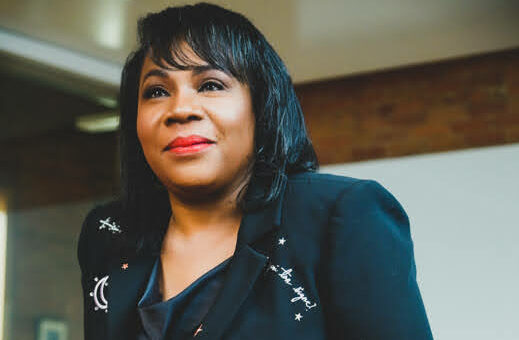
The Kresge Foundation in Detroit works to collaborate with cross-sector partners to promote and expand long-term, equitable opportunities in Kresge’s hometown through grantmaking and social investing. As such, they are one of the largest funders of environmental work in the city and region. This funding has gone to several of the programs and entities SBN Detroit has covered in our shared content. We spoke with Wendy Lewis Jackson, the managing director for Kresge’s Detroit Program, to get her perspective on the foundation’s impact in the Detroit area and specifically businesses in Southeast Michigan. Jackson leads Kresge’s efforts to revitalize Detroit and strengthen its social and economic fabric. Her work supports organizations providing economic opportunity for low-income people and addresses the needs of vulnerable children and families. Before joining Kresge in 2008, Wendy was a program director for Children and Family Initiatives and executive director for education initiatives at the Grand Rapids Community Foundation. She taught at Grand Valley State University and has co-authored and assisted in the publication of several reports and publications that address community needs and problem-solving. Wendy earned a bachelor’s degree in political science and communications from the University of Michigan. She also holds a master’s degree in social work from U-M, with a concentration in community organization and social policy and planning. Q: The Kresge Foundation was founded in 1924 to promote human progress. How does that mission inform the Kresge Foundation’s work today? A: The mission at that time was very broad, and since that time it’s been refined to include expanding opportunities in America’s cities with an emphasis on supporting families with low income. We now work in cities across the country. Detroit is our hometown and our signature place-based community. We have three other cities of focus and those are Memphis, New Orleans, and Fresno. But we are a national foundation deeply focused on place-based work in hundreds of cities. Q: What are the shifts you’ve seen since started in this role in 2008 and how has the focus changed? A: Our focus shifted starting in 2007 when our president Rip Rapson joined the foundation. Our north star changed from a philanthropy primarily focused on capital challenge grant campaigns for building projects across the country to programmatic grantmaking and social investing designed to ensure that people with low incomes have full access to economic and social opportunity in America’s cities. We now invest deeply in Detroit alongside six discipline-based foundation programs – health, community development, environment, arts and culture, human services, and higher education. Q: What type of work are you doing in Detroit toward your environment focus? A: In Detroit, we work citywide and in neighborhoods to advance economic equity, quality of life, and climate resilience for Detroiters so environmental justice and mitigating the impacts of climate change are a huge part of our portfolio. We support community-based groups and organizations to realize their goals when it comes to climate resilience. We also offer support for advocacy efforts within the state focused on ensuring greater environmental sustainability. Q: What are some examples? A: One of the largest examples involves our work in the Jefferson Chalmers community and the east side of the city. We recently announced the launch of a multimillion-dollar network of solar-powered resilience hubs on Detroit’s east side where residents can go for emergency services and support in times of flooding and other emergencies. The city of Detroit, Eastside Community Network, and Brilliant Detroit will have the first three hubs with more to be added later. We are also working with Jefferson East Inc. and also the University of Michigan Sustainability Clinic on supporting their efforts to address flooding challenges and helping residents to mobilize and advocate for change. Q: What do you think the Kresge Foundation’s impact is on the businesses in Southeast Michigan? A: We hope that through our grantmaking and social investing we begin to raise awareness and possibilities for businesses to get engaged in projects that allow communities better access to improved solar, mobility, and more. One example of this is our partnership with the city of Detroit and DTE on the O’Shea Urban Solar Farm. We don’t want Detroiters to be left behind in the movement toward climate resilience. Businesses in Southeast Michigan are poised to be leaders in the movement to address climate change. So, we are actively seeking opportunities to help businesses ensure that Detroiters have greater access to sustainability technologies and opportunities and make sure community-based groups are able to engage with businesses in these efforts. Q: What are your efforts in sustainability as it pertains to jobs and workforce development in Southeast Michigan? A: I’m glad you brought it up because our efforts are quite significant. A big focus is to make sure Detroiters have access to new and existing jobs in environmental sustainability and climate resilience. We are looking to expand those opportunities now. We supported workforce development efforts through a partnership with the Greening of Detroit. We also recently announced $1.7 million in grant funding for six projects that will benefit communities and wildlife habitats in southeast Michigan. Another example relates to the resilience hubs I mentioned. That project includes a business accelerator to engage Black and Brown contractors in the solar, battery storage, and electric vehicle infrastructure work. Q: What do you think is the role of businesses in Southeast Michigan when it comes to sustainability? A: They have a significant role. As I said, Detroit is in a good position to be a leader in climate resilience. Businesses here are in the process of bringing new and advanced technology toward these efforts and they must ensure all Detroiters have access. It’s critical that businesses are engaged in these efforts. I’d like to share an open invitation to businesses in Southeast Michigan as we are open to partnerships that will ensure Detroit is climate-ready and climate-smart. Q: In terms of this, what are the biggest opportunities? A: We have to look deeply into both the Infrastructure and Jobs
